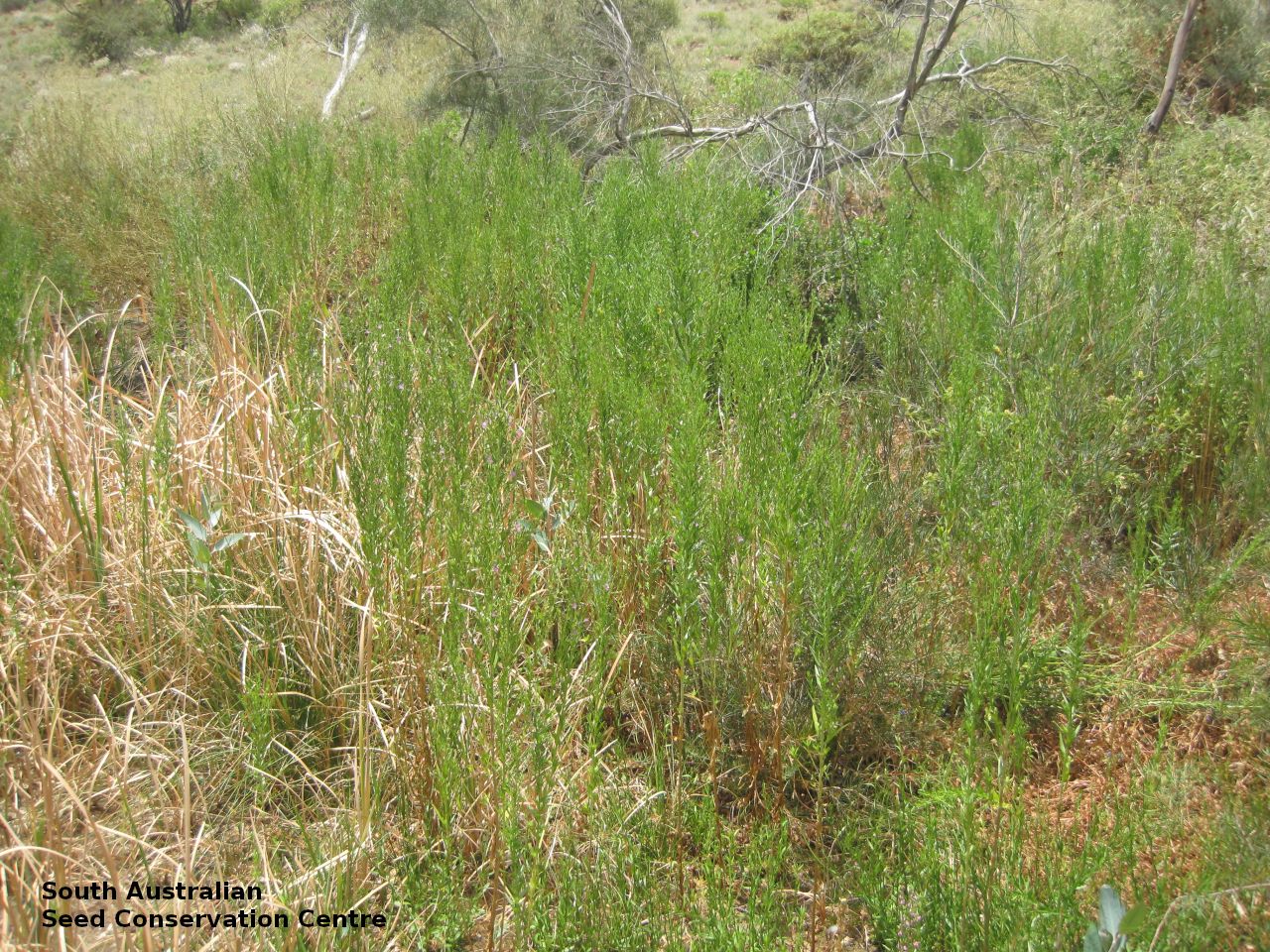
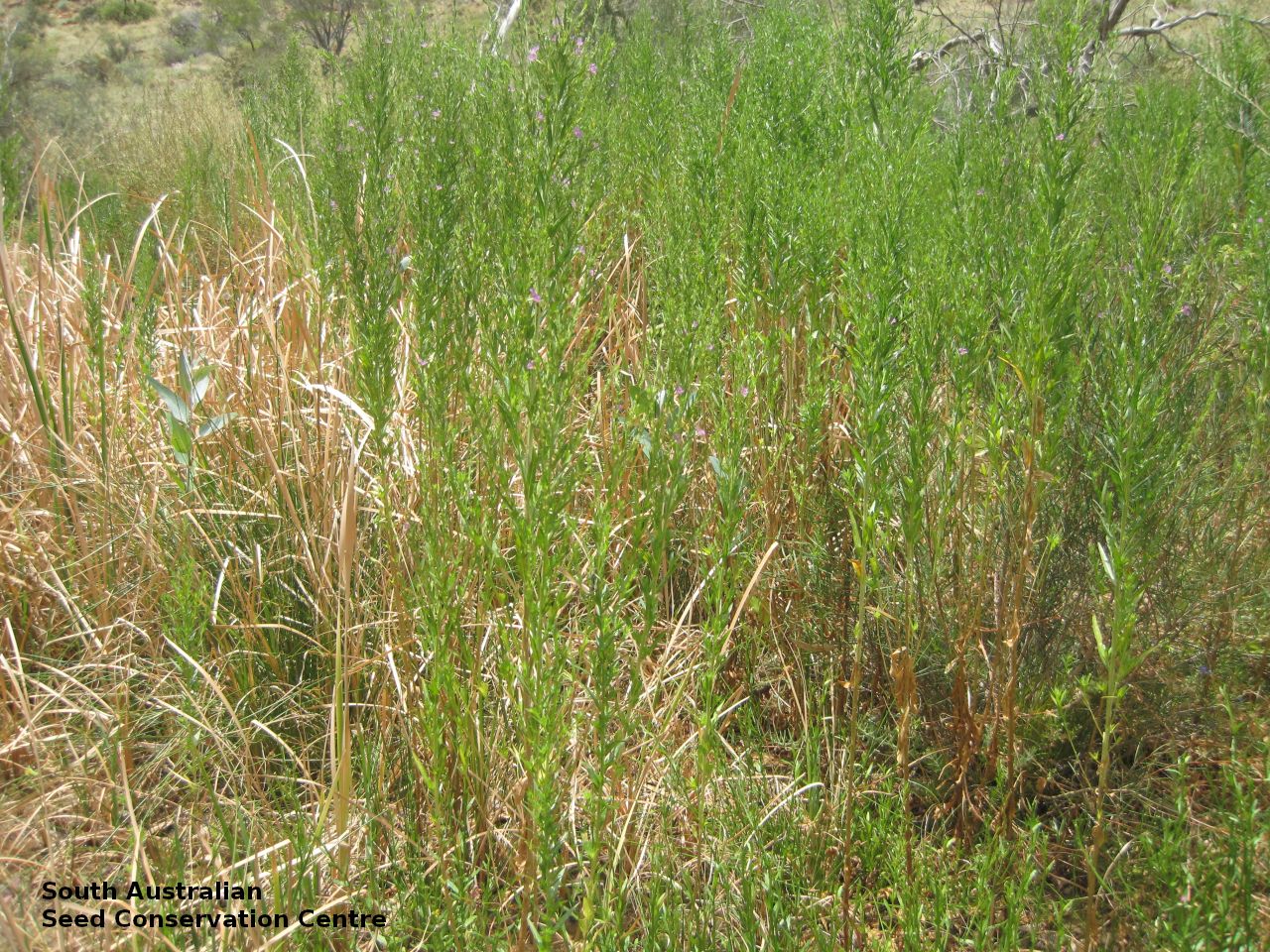
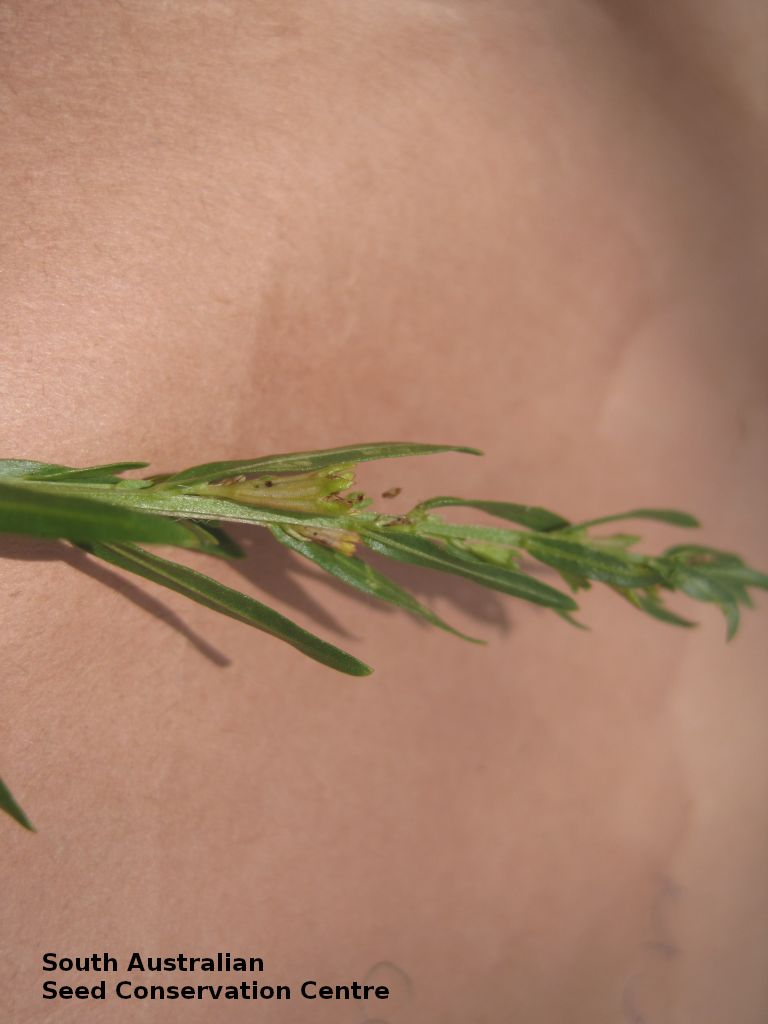
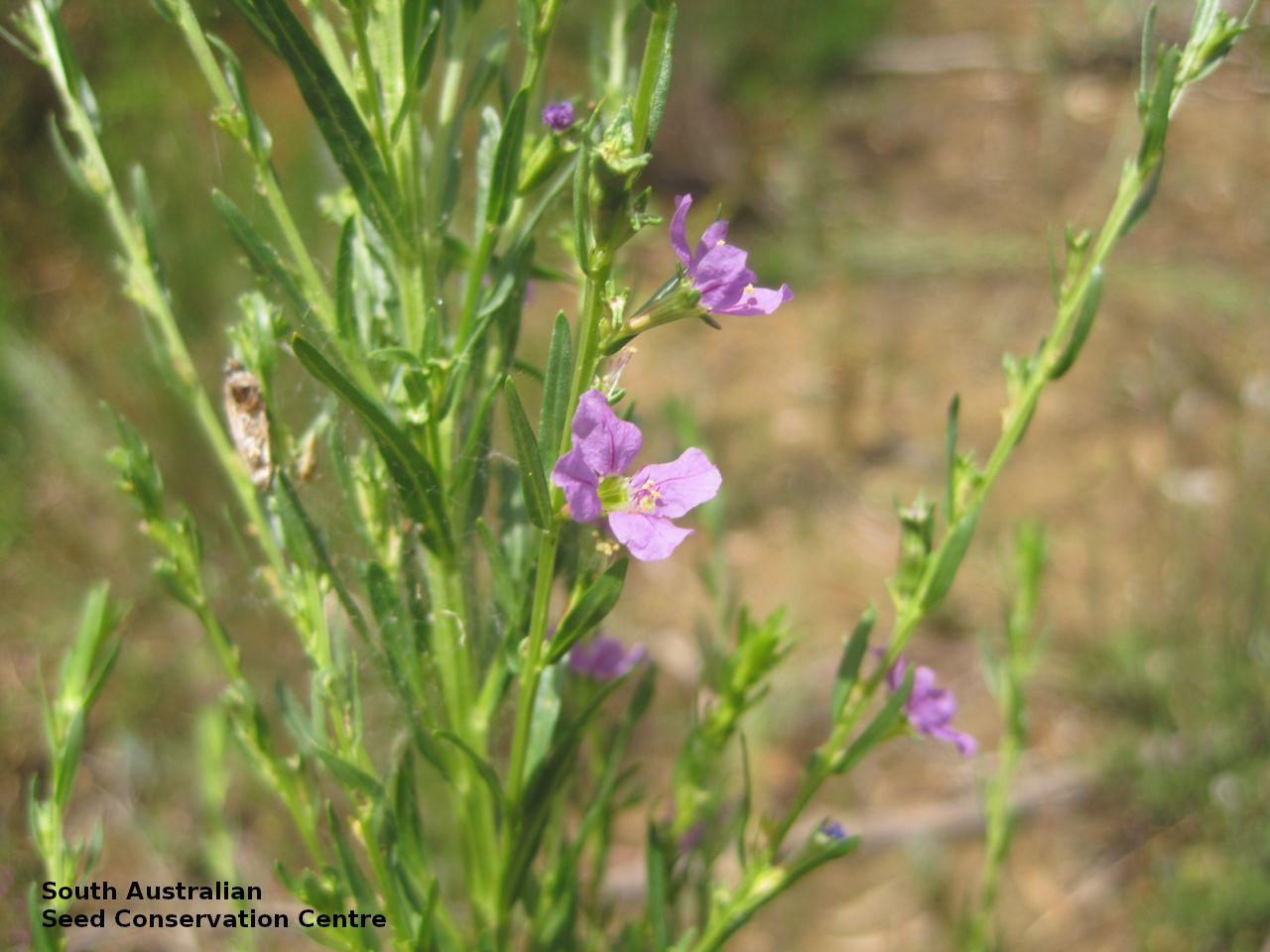
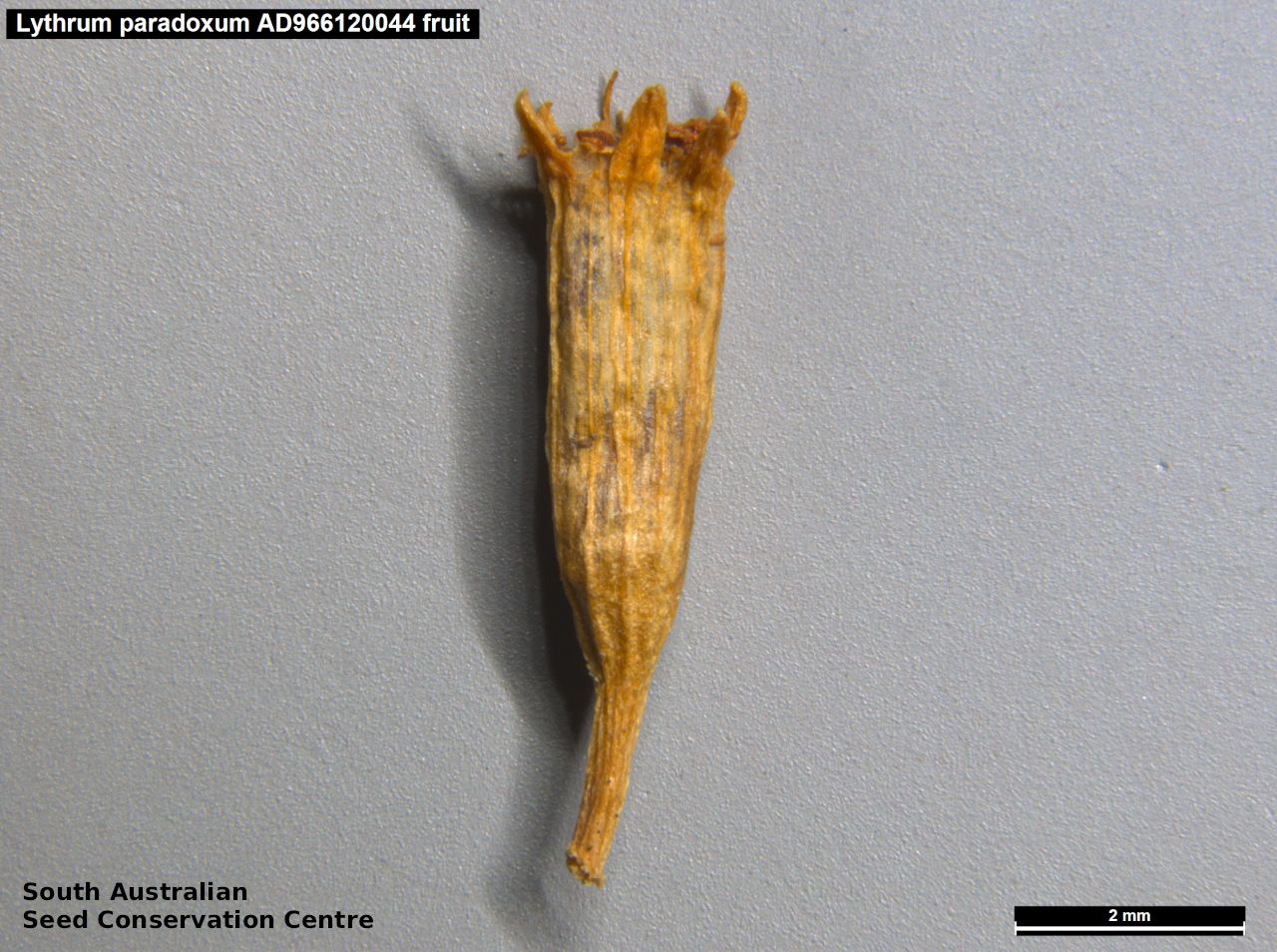
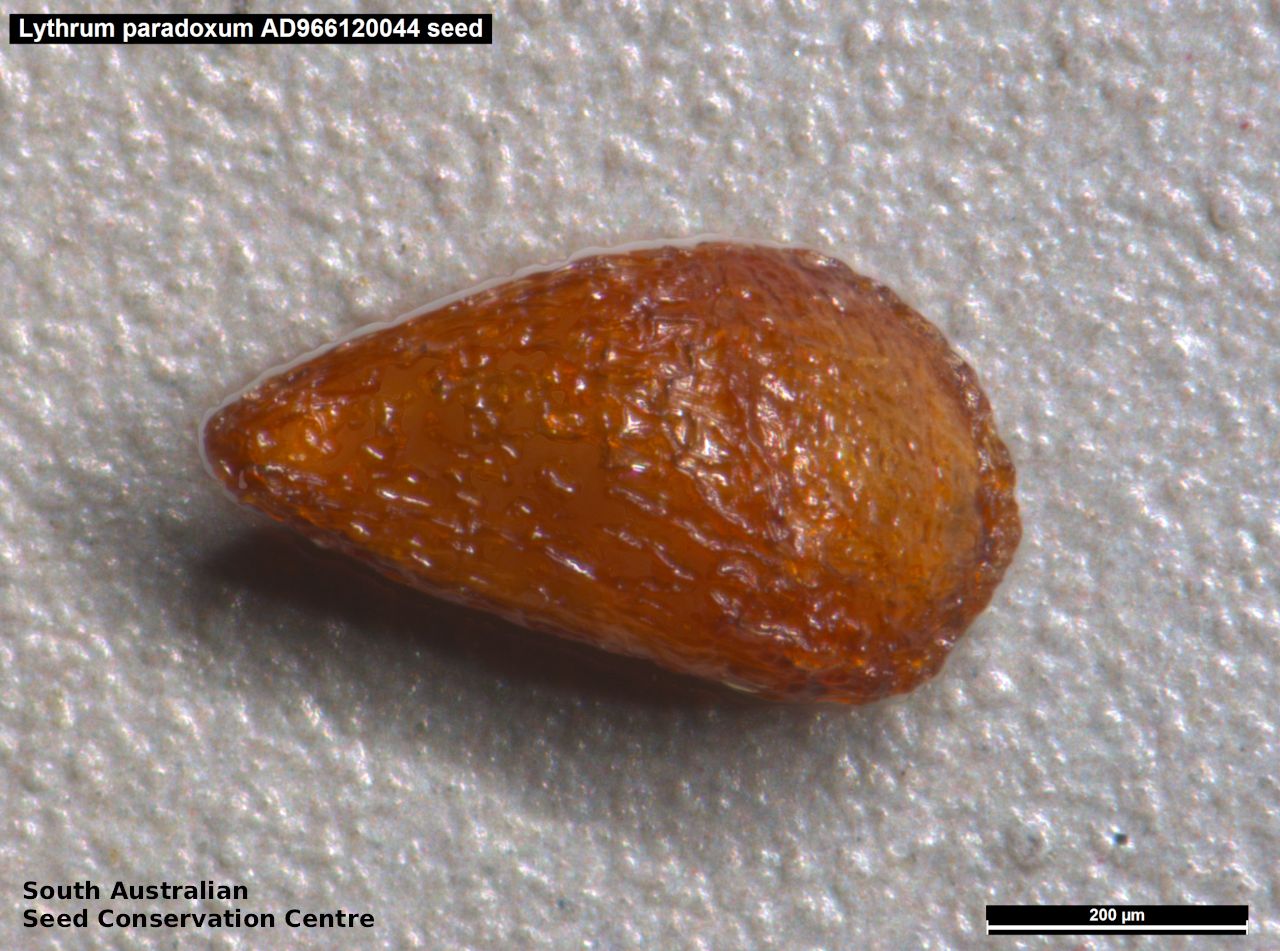
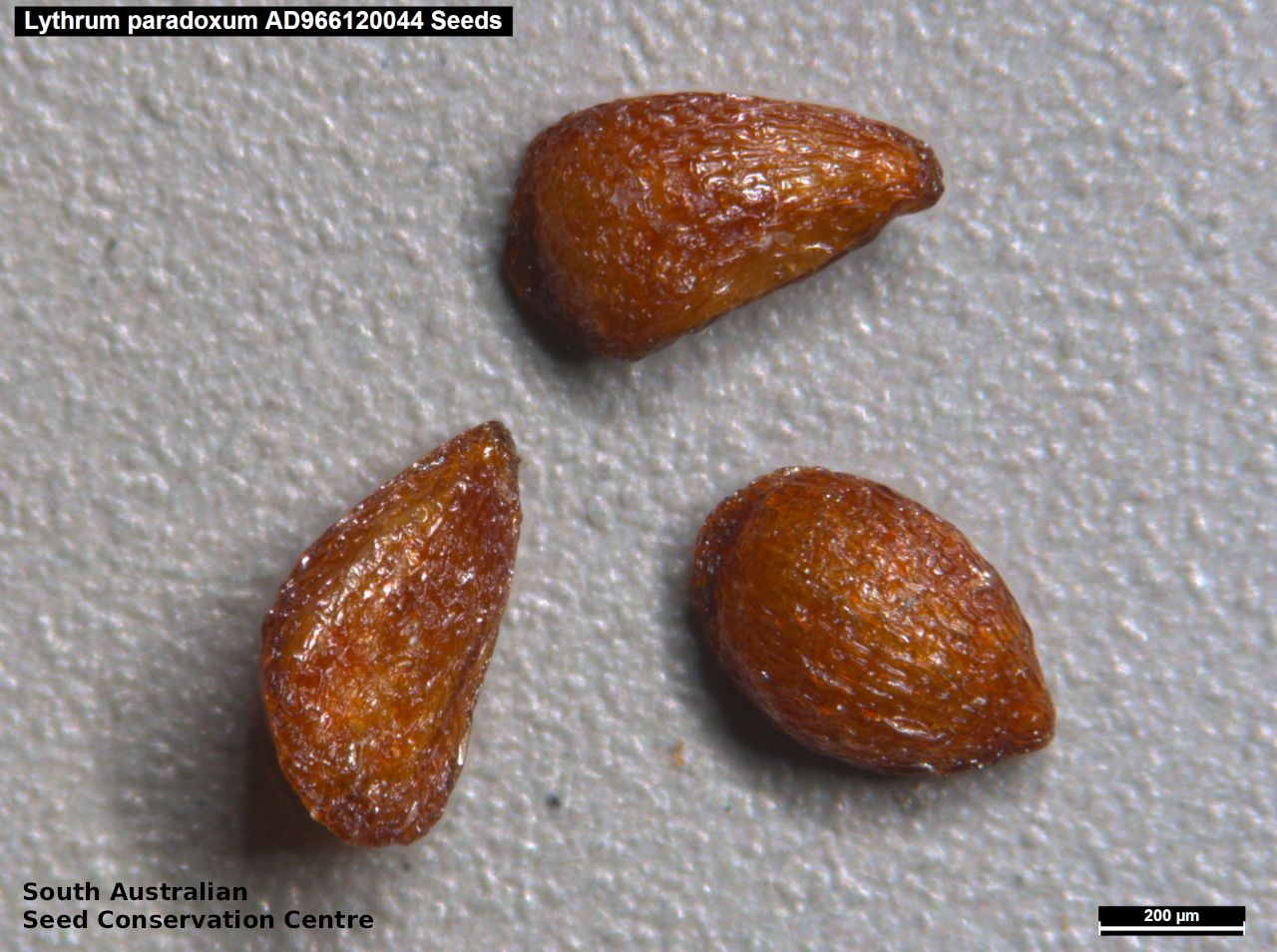

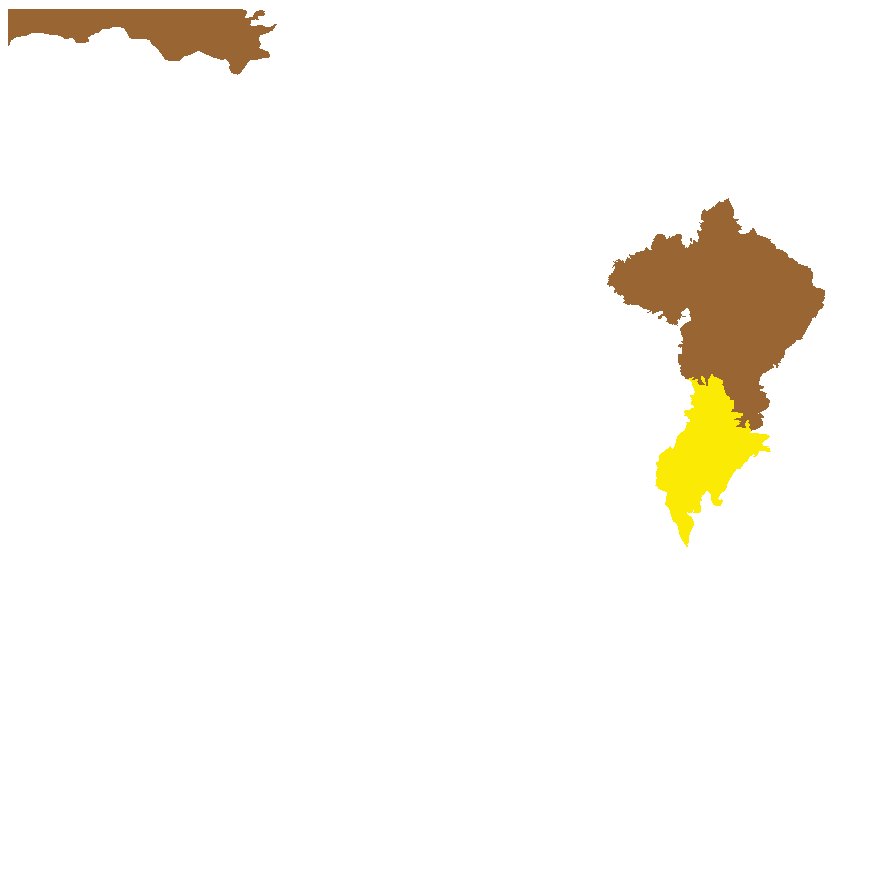
Etymology
Lythrum, an ancient name used by Dioscorides from the Greek 'lythron', meaning black blood, referring to the purple colour of the flowers of some species but it has been suggested that it refers to some styptic property of the plant. Paradoxum, from the Latin 'paradoxus,' meaning paradoxical, contrary to the usual type; not known what this is referring to.
Distribution and status
Found in the northern Flinders Ranges and far north-western corner in South Australia, growing in damp places on heavy soils. Also found in all mainland States. Native. Rare in South Australia. Rare in Western Australia, Victoria and New South Wales. Uncommon in the Northern Territory. Common in Queensland.
Herbarium regions: North Western, Flinders Ranges
NRM regions: Alinytjara Wilurara, South Australian Arid Lands
AVH map: SA distribution map (external link)
Plant description
Erect annual or perennial herb, to 60 cm high with glabrous, ribbed to winged stems. Leaves, alternate, sessile, narrow-ovate to linear, to 70 mm long and 10 mm wide; apex acute, base rounded to obtuse. Inflorescence in clusters with 1–7 pink or purple tubular flowers in the axils of leave; sepals 4–6, triangular; petals 4–6, spreading, broadly ovate; stamens double the number of the peta; exserted. Flowering between December to April. Fruits are brown papery cylindrical capsule, splitting by 4 valves. Seed embryo type is spatulate.
Seed collection and propagation
Collect seeds between February and June. Collect mature capsules that are turning brown in colour and contain brown seeds. Whole stem containing many clusters of fruit can be collected. Place the capsules in a tray and leave to dry for two weeks. Then rub the capsules gently by hand to dislodge the seeds. Use a sieve to separate the unwanted material. Be very careful as the seeds are very small. Store the seeds with a desiccant such as dried silica beads or dry rice, in an air tight container in a cool and dry place. Seeds are non-dormant, viable seed should germinate readily.
| Location | No. of seeds (weight grams) | Number of plants | Date collected | Collection number Collection location | Date stored | % Viability | Storage temperature |
|---|---|---|---|---|---|---|---|
| BGA | 90,800 (2.27 g) | 40+ | 17-Apr-2011 | KHB570 Flinders Ranges | 1-Nov-2012 | 90% | -18°C |
Number of plants: This is the number of plants from which the seeds were collected.
Collection location: The Herbarium of South Australia's region name.
% Viability: Percentage of filled healthy seeds determined by a cut test or x-ray.